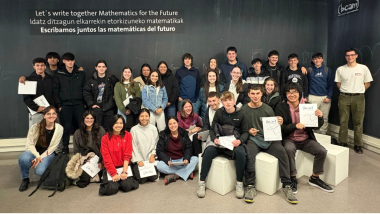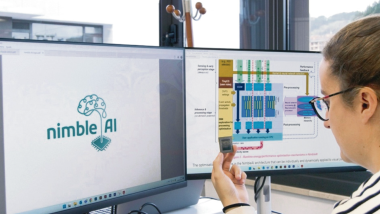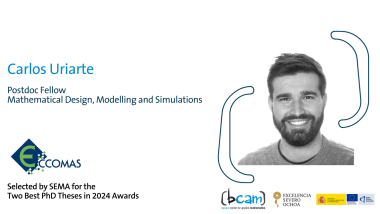Simone Rusconi has defended his doctoral thesis
- The defense took place in the Faculty of Science and Technology of the University of the Basque Country, located in the Campus of Leioa, on Thursday June 14th
Simone Rusconi joined the Basque Center for Applied Mathematics by an internship within the Mathematical Modelling with Disciplinary Applications research area in 2013 and became PhD student under the supervision of Prof. Elena Akhmatskaya in 2014. Before arriving at BCAM, he obtained a Bachelor Degree (2011) and a Masters (2014) in Mathematical Engineering at Politecnico di Milano in Italy.
His research interests include Stochastic models and Monte Carlo simulation algorithms for various physical, biological and chemical processes. His PhD thesis has been directed by Ikerbasque Research Professor Elena Akhmatskaya, Leader of the Modelling and Simulation in Life and Material Sciences Group at BCAM, and Ikerbasque Research Professor at the UPV/EHU Dmitri Sokolovski.
On behalf of all BCAM members, we would like to congratulate Simone.
Title: Probabilistic Modelling of Classical and Quantum Systems
While probabilistic modelling has been widely used in the last decades, the quantitative prediction in stochastic modelling of real physical problems remains a great challenge and requires sophisticated mathematical models and advanced numerical algorithms. In this study, we developed the mathematical tools for solving three long-standing problems in Polymer Science and Quantum Measurement theory. The question, “Why kinetic models cannot reproduce experimental observations in Controlled Radical Polymerization (CRP)?” has been answered by introducing in the kinetic model a delay and treating CRP as a non-Markovian process. The efficient stochastic simulation (SS) approach allowing for an accurate description of CRP has been formulated, theoretically grounded and tested using experimental data and the less advanced SS algorithms. An accurate prediction of a morphology development in multi-phase polymers is vital for synthesis of new materials but still not feasible due to its complexity. We proposed a Population Balance Equations (PBE)-based model and derived a conceptually new and computationally tractable numerical approach for its solution in order to provide a systematic tool for a morphology prediction in composite polymers. Finally, we designed a stochastic simulation framework for continuous measurements performed on quantum systems of theoretical and experimental interest, which helped us to re-examine the “fuzzy continuous measurements” theory by Audretsch and Mensky (1997) and expose some of its deficiencies, while making amendments where necessary. All developed modelling approaches are general enough to be applied to the broad range of physical applications and thus ultimately to contribute to the understanding and prediction of complex chemical and physical processes.
Related news
About the center
About the center




